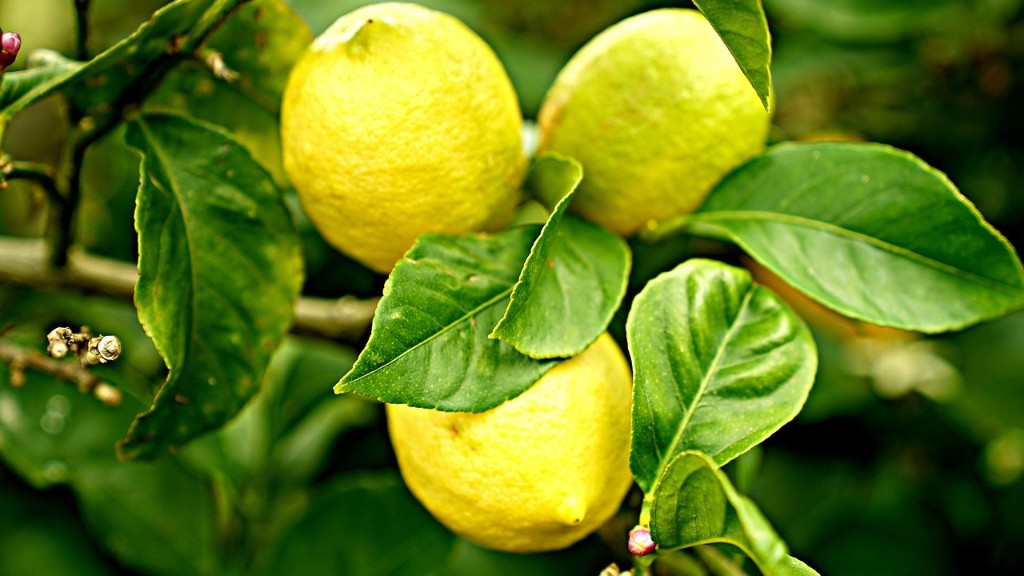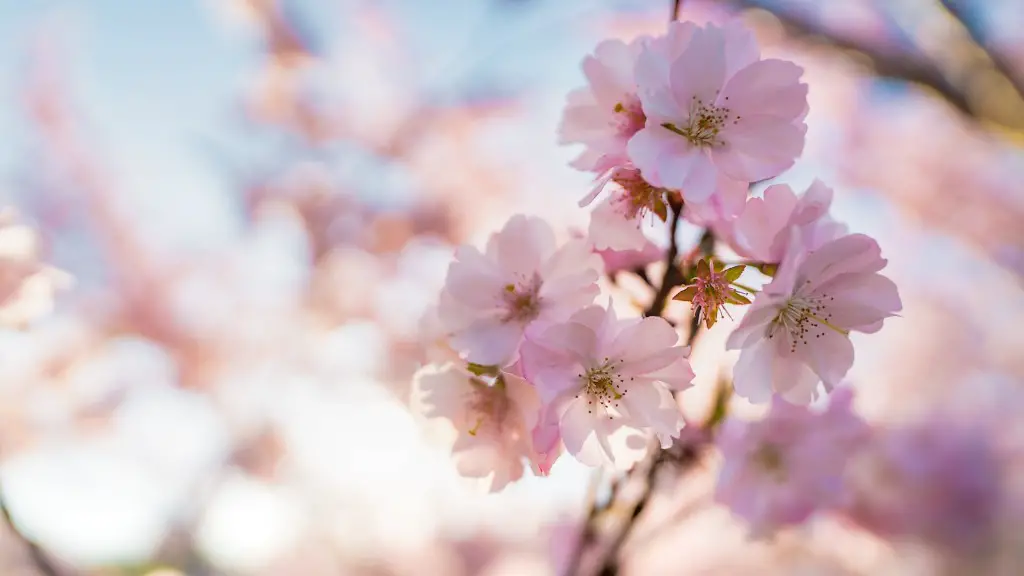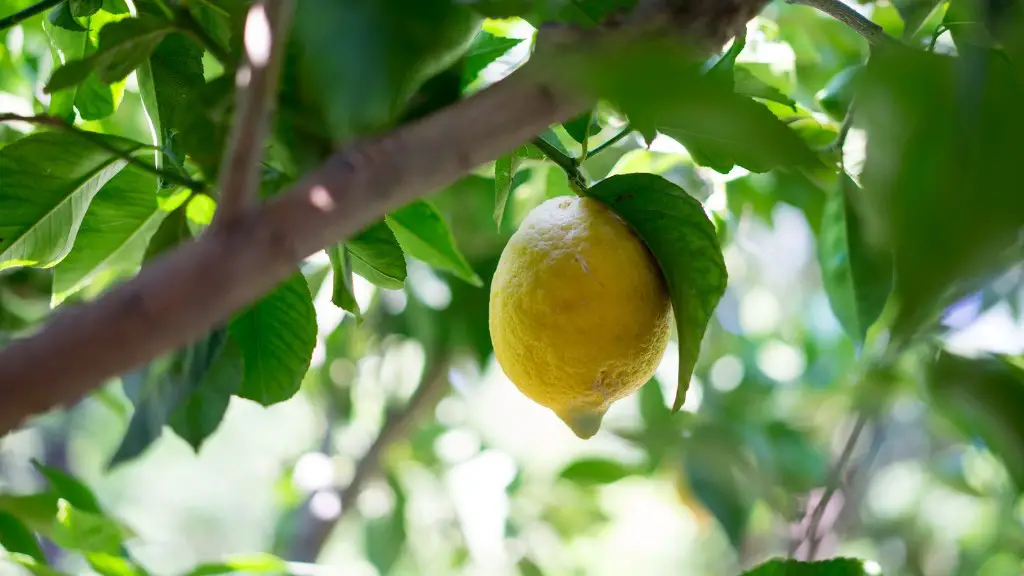Losing a lemon tree can be devastating, but it can also be an opportunity to understand the underlying cause and prevent it from happening in the future. There are several potential explanations for why a lemon tree may have died. Unfortunately, the definitive answer can only be obtained by performing a soil sample and analysis of the soil to determine if there was a nutrient deficiency.
Over-watering a lemon tree can be a major cause of death for the plants. If the soil is overly saturated, the roots can become oxygen deprived, leading to root rot and eventually death. Contrarily, under-watering can also be detrimental to a lemon tree, as it needs at least an inch of water per week in order to stay healthy. Too little water can cause leaves to turn yellow and drop, while too much water can lead to root rot.
The wrong type of soil can also be harmful to the growth and survival of a lemon tree. The optimum soil is loose, well-draining, and contains a pH range of 6.0 to 6.5 with a slightly acidic value. Too much clay in the soil, too much salinity, and soil amendments with lots of fertilizer, can all contribute to a lemon tree’s death.
Inappropriate pruning can also bring about negative effects on the health and life of a lemon tree. Pruning late in the season can create an entry point for fungal and bacterial diseases. Pruning too much, or in the wrong sections of the plant will cause the growth of the tree to become hindered, resulting in a weakened and unhealthy tree.
Inadequate tree maintenance is another factor which can lead to the death of a lemon tree. If the tree is not receiving sufficient amounts of light and air, it will become stressed and will suffer a stunted growth rate, or lose its fruit prematurely. Refraining from applying pesticides and herbicides when the tree is stressed can also contribute to the health of a lemon tree.
Light Requirements For Lemon Trees
The natural indoors environment of many homes can lead to poor growing conditions for a lemon tree. It is important to choose a well-lit spot near a window that is receiving natural sunlight, as the tree needs this to photosynthesize and stay healthy. The tree should be rotated a few degrees every few days to ensure that all of the leaves receive light, however, this monitor should not be used excessively to prevent changing the direction too frequently.
If natural sunlight is not available, it is recommended to use grow lights to ensure that the lemon tree is receiving the correct spectrum of light it needs. Depending on the type of grow lights used, the lemon tree needs to be placed 12 to 16 inches away from the bulbs and should receive 8 to 12 hours of light per day. By making sure that the tree is receiving the correct amount of light, it can promote healthy growth and will increase the chances of success.
Temperature Requirements For Lemon Trees
Lemon trees prefer a warmer climate to stay healthy and ultimately succeed in their life cycle. They require temperatures of between 65 to 85 °F during the day and 55 to 65 °F at night, to keep from being damaged by the cold weather. If the winter nights drop below 55°F, a lemon tree can suffer from cold damage or the formation of frost, which until unfavorable conditions rectify or improve, the tree will lose its foliage.
If temperatures momentarily rise above 85°F for a prolonged amount of time, a lemon tree is at risk of suffering from sunburn. Heat stress can manifest in a form of leaf damage known as scorching, where in its more severe forms, yellow patches and rings begin to form as an indication of sun damage.
By understanding the optimum temperature levels an indoor lemon tree needs to be within, one can ensure that they are set up correctly in the kitchen or indoors. Every 4 to 6 weeks the tree should receive a good watering and misting, using a spray bottle to create humidity around the plant and to create an environment more like the tropics. By not misting the tree, it can become more vulnerable to spider mite infestations.
Pests and Disease Prevention For Lemon Trees
The most common pest associated with a lemon tree is the spider mite which thrives in dryconditions. Infestations can be identified by the presence of webbing around the leaves and stems, and causes yellowing, leaf loss and a decline in vigor of the plant. In order to effectively prevent a spider mite infestation and protect a lemon tree, regular misting, water and nutritional needs must be met.
Fungal diseases such as powdery mildew can also cause damage to a lemon tree. The fungus is spread bywind and attacks the leaves and stems, producing white spores and is visible as a greyish-white powdery deposit. To prevent powdery mildew, it is essential to ensure that the tree is receiving the right amount of air circulation.
Root rot can be another detrimental disease that affects the health of a lemon tree. The symptoms can be identifiedby a yellow discoloration of leaves with leaf drop and wilting of the shoots. If left untreated, the roots will be subject to fungal infection and will eventually rot, leading to death. To prevent this from occurring, correct watering schedules, ensuring the soil is not overwatered, and pruning dead or dying branches can help eliminate root rot.
Proper Planting Techniques For Lemon Trees
Once the lemon tree has been purchased, it is essential to plant them in the correct manner to ensure that thetree has a strong root base. First, inspect the leaves of the tree for any signs of disease, wilting or discoloration, brushing off any clumps of dirt to ensure that the root ball is not smothered or damaged.
Before being planted, the soil should be thoroughly tilled, mixing in some compost and organic material to improve its structure and porosity.Once the tree is set into the ground, it should not be moved as this can cause shock and root movement, leading toroot damage and death.
After the tree is planted, water should be applied on a consistent basis to the entire root system.Avoid deep watering that can saturate the soil and encourages root rot, instead, it should be gently sprinkled around the plant, only when necessary to avoid over-watering.
Once the tree is established in its current location, it should be fertilized every 2 to 4 weeks during thegrowing season. It is recommended to use a balanced fertilizer, such as 10-10-10, to nourish the tree’s roots and stems, however, one should be careful not to over fertilize the tree or use fertilizer with a high concentration of nitrogen, as this can burn its foliage.
Preventative Measures For Lemon Tree Death
One of the most important preventative measures is to prune the lemon tree correctly during the tree’s growing season. Prune any dead or diseased branches, as well as any shoots that are growing too close to the main stem of the tree, allowing more light and air to circulate throughout its leaves and branches.
Other useful preventative measures include removing any weeds that are growing close to the base of the tree, as weeds can inhibit lemon tree growth and cause root competition. Additionally, mulching can be used to help retain moisture, creating an anaerobic environment for the roots and preventing evaporation. It is also important to monitor for pests and disease, as these can cause harm to the tree and weaken its health.
Lastly, it is recommended to check the pH level of the soil once a month to ensure that it is within the optimal range of 6.0 to 6.5. This can be done by purchasing a soil testing kit and following the instructions as provided. By taking these precautionary steps to monitor the soil, fertilize, prune and water the tree regularly, a lemon tree can be kept healthy and ward off any potential illnesses.



